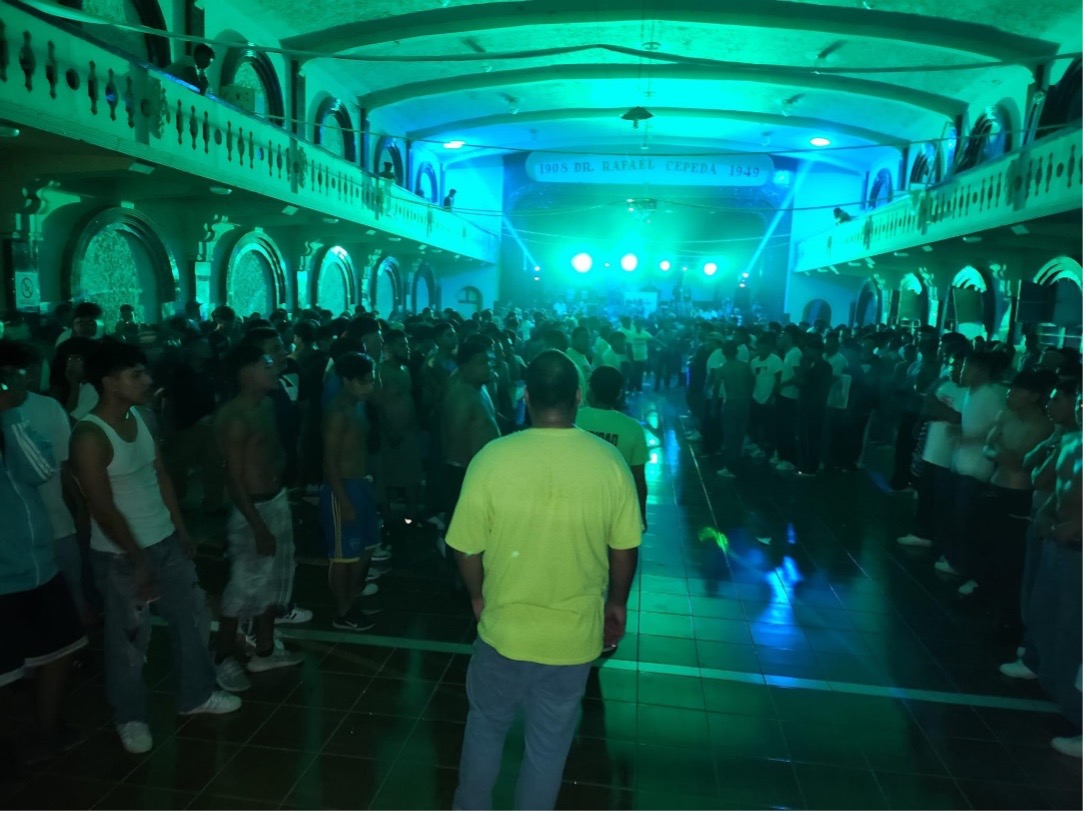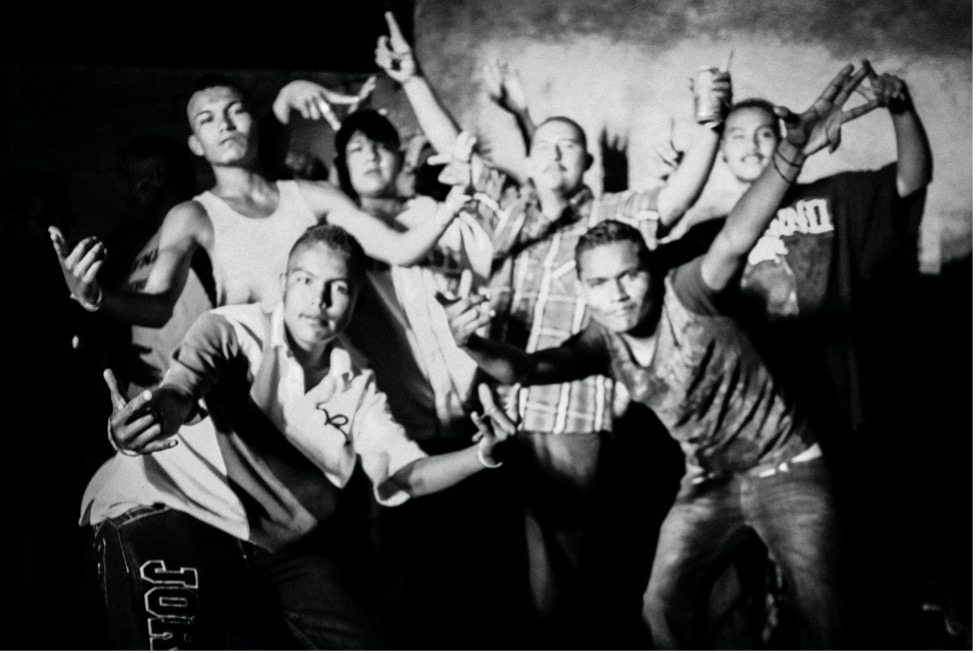A Wepa Afternoon in the Barrio: The Sonidera Scene in Northeast Mexico
This week’s blog introduces our readers to another historically rich sonidera scene in northeastern Mexico. Following a previous post on Monterrey’s sonidera history, guest blogger Daniela Hernández Ruiz now takes us to Saltillo, home of Sonido Radio Pirata and the birthplace of cumbia wepa. This blog is also available in Spanish at this link.
by Daniela Hernández Ruiz
El Gallinero is the name César and Napoleón give to the space where they produce their radio program, Una esquina, una historia (“One Corner, One History”). Every Wednesday, they broadcast Colombian music—cumbia and vallenato—over the Internet, sending greetings to all the gangs in Saltillo, Coahuila, in northeastern Mexico. Here I meet Napoleón, a communication specialist and founder of the Radio Pirata project, which dates back to 1999 and also lends its name to his sound system.
“In my neighborhood, Los Piratas were always around, so I named the sound system Radio Pirata. That’s where my interest in audio really started. I was already involved in social work, bringing people together and organizing dances, which is how I got to know all the gangs in Saltillo.”
By the mid-1980s, the industrial boom in Saltillo drew rural populations to the city’s outskirts. During this wave of migration, issues such as social marginalisation and urban precarity emerged, affecting children and young people in particular.
By the 1990s, Saltillo had nearly 600 youth gangs and crews spread across approximately 550 neighbourhoods, controlling much of the city’s territory. One of these groups, Los Piratas (“The Pirates”), was based in the central districts of Saltillo and had around 60 members. Most of these young people and teenagers worked in construction or factories, while a handful pursued their studies.
At the time, gang members—often referred to as chavos banda—fought over territory, long-standing feuds, or simply the need to assert dominance and control. Amid rising violence, their sense of belonging and pride in representing their neighbourhood found an outlet through dance battles. Estudio 85 became the first and only dance hall spot where Colombian cumbia records were played every Sunday from 3pm. In a city with a nascent cultural industry and scarce spaces dedicated to Colombian cumbia, Estudio 85 took on vital importance.
Napoleón reminds me that Colombian music first arrived in the center of Monterrey. From there it crossed the San Luisito Bridge, also known as Puente del Papa [2], spreading into what is now known as Colonia Independencia. That is where the Dueñez sound system dynasty resides, recognized as one of the pioneering families in the reproduction of cumbias rebajadas and credited with expanding the genre to San Luis Potosí, Coahuila, and other surrounding states.
According to Napoleón, the Dueñez family has been a driving force in the informal distribution of Colombian music between these territories. In the late 1960s, within this very context, Gabriel Dueñez began selling cassettes on the San Luisito Bridge in Monterrey, recording tropical songs from his vinyl collection—an activity that quickly gained popularity and spread to other parts of the city.
Monterrey is located in northeastern Mexico, boasting a strategic position and well-developed transport networks. As the most important urban centre in northern Mexico, the city became a key hub for cultural exchange. The sonideros and the first interpreters of Colombian music in Monterrey played an active role in the appropriation and redefinition of cumbia in the region.
The sonideros paved the way for Colombian-produced music to reach Monterrey, becoming its first mass disseminators in Colonia Independencia. Through the organisation of dance events, these sound systems cultivated a following among young people, who played a crucial role in spreading the music to other parts of the city and its outskirts. By the 1970s and 1980s, this musical appreciation had expanded to new territories, including Saltillo, just 87 km away. In both Saltillo and Monterrey, the defining genres of sonidera culture and working-class neighbourhoods are Colombian cumbia and vallenato. In Saltillo, the consolidation of Colombian music within the popular taste stemmed from two key events: the success and widespread influence of Celso Piña’s music and the opening of the dance hall Estudio 85.
It is significant that, throughout this process, the appreciation for what was once broadly known as tropical music has gradually narrowed, first focusing on cumbia and now on vallenato. Today, this musical taste plays a key role in shaping identity recognition in both Monterrey and Saltillo. The Colombias—street corner youth [1]—are widely credited with blending this tropical sound with DJ culture, remixing, and electronic music. Napoleón, known as “Barra” in the neighborhood, tells me that cumbia wepa first emerged in Coahuila.
The cumbia wepa, or what we call the edited cumbia, was created in Coahuila by Daniel Alejandro (DJ Masta) and me; we are the creators of that genre. Daniel Alejandro started making his mixes, got in touch with me, and we began producing music together, selling folders of edited music to Kiss Sound El Rey del Wepa, Super Changa, Batichica, Internacional Sonido La Cotorra, and other sound systems. That’s how edited cumbia spread. There are many cumbias by Enrique Díaz and Carmelo Torres that, at that time, were not made in four beats; it was the whole orchestra recording together. By extracting key samples of songs, making loops, and adding beats and guacharaca, we turned music that wasn’t danceable into something that could be danced to.

Paseo 2255. Image © Daniela Hernández Ruíz.
Estudio 85 closed its doors in 2011 due to the wave of violence that swept across the country during the so-called ‘War on Drugs’ under the administration of Felipe Calderón. For the past ten years, it has been replaced by Paseo 2255, a dance hall that opens its doors every Sunday from 7 PM to midnight for Saltillo’s gangs. As the edited cumbia of Sonido Radio Pirata plays, the MC delivers saludos (shoutouts) to the crowd using a microphone with a delay effect.
Napoleón invites me to the tenth anniversary celebration in February 2024. Before entering the hall, there is a courtyard where a long queue forms to pay and undergo a thorough security check. The majority of attendees are men aged between 15 and 30. There are also a few boys aged 10 to 14 who accompany their older friends from the neighbourhood.
As I enter, I walk along the edge of the hall toward the stage to greet Napoleón, staying close to the sidelines, just a short distance from the surging crowd that fills the dance floor. There are around 200 people, including approximately 30 young women between the ages of 15 and 25. Among them, two women stand out, likely in their 30s or 40s. Each person is with their respective crew. Most of the men have stripped off their shirts, using them to wipe away the sweat streaming down their faces, backs, arms, and chests. In the middle of the dance floor, a row of about 15 security guards in fluorescent shirts stands firm, holding the crowd back.

Napoleon aka Sonido Radio Pirata. Image © Federico Jordán.
These dance moves—marcarla, as they say in the neighbourhood: a hunched posture, feet gliding back and forth as if sanding the floor, and fingers forming signals only they understand. [3] These are their codes, the codes of the gang.
The fights begin with shouting and gestures; at this stage, signs of the neighbourhoods are exchanged, insults are hurled, and personal challenges are thrown. One, two, or three members from each gang move quickly across the battlefield, while a few stand tall with their heads held high and arms outstretched. After this, they rejoin their group, and with short but determined steps, the crowd moves toward the other gang, initiating a first exchange of slaps and strikes that quickly ends with the intervention of the security guards.

Corner gang guys at Paseo 2255. Image © Federico Jordán.
The sound system in the venue is made up of four 18-inch subs with subsonic frequency and two double 15-inch mid-range speakers, playing at nearly their maximum power of 136dB, creating a feeling of overwhelming vibration.
I observe all of this while sitting on the balcony of the stage. From this height, I’m safe from the stampede that rushes toward the edges of the hall, pushing and shoving between the dance and the fight. Once the scuffle subsides, they return firmly to their side of the hall, continuing with insults and dancing, jumping and spinning in circles. Three young women, each between 18 and 20 years old, arrive at the balcony, each with a small child—her own. They stay there to watch the spectacle and keep the children safe from the crowd.
Just before midnight, the dance floor starts to clear, and those who remain take the opportunity to showcase their best cumbia moves, as if they were martial kicks and acrobatics, making the most of the space. The three young fathers of the little children in attendance gather with them and their mothers, put on their shirts, and, as a family, move toward the final group photo, tirando barrio. [4]
Final Note
Despite the stigma, the feeling and emotion tied to Colombian cumbia unite both today’s youth and those from the 1990s around the same music. The essence, emotion, and sense of community are expressed through dancing. The music calls for togetherness, friendship, and rivalry. Dancing creates a collective body, a group representation of style. It embodies both change and permanence, it signifies existence, and marks one’s presence in the urban stage. Without a doubt, this feeling is passed down from generation to generation, positioning sonideros like Radio Pirata as icons of neighbourhood tradition.
Even though dance halls may change names, times, and locations, at every corner of the neighbourhood, there will always be a story where music is acknowledged as playing a fundamental role in life. “Lower-class music” is the phrase with which Radio Pirata introduces itself before dropping the cumbia wepa that gets all the kings of the slum dancing.

Corner gang guys at Paseo 2255. Image © Federico Jordán.
—
Notes
[1] Street corner gangs (bandas esquineras) are made up of working class youth, deeply rooted in their home neighbourhoods, with little aspiration for upward mobility. Within the gang, members have specific roles, along with clearly defined duties and responsibilities. (Whyte, 1972: 19)
[2] El Puente del Papa (‘ The Pope’s Bridge’) was a popular market located along the Santa Catarina River, beneath the bridge of the same name, near the Independencia neighbourhood. It first emerged in Independencia in the 1980s, and by the 1990s, it had relocated to the dry section of the river.
[3] In northeastern Mexico, the term marcarla is used to refer to dancing Colombian cumbia.
[4] ‘Tirar barrio’ refers to making hand signs of letters or numbers that identify a specific gang, as well as doing so verbally (shouting).
About the Author:
Daniela Hernández Ruiz is a criminologist, collaborating in violence prevention projects with a focus on human rights. She works towards semiotic subversion and cultural dissent. She is a dancer and passionate about cumbia.
References
Olvera, Jose. Colombianos en Monterrey. Génesis y prácticas de un gusto musical y su papel en la construcción de una identidad. UANL. México, 2005.
Whyte, William. “Street corner society”. University of Chicago Press. E.U. 1943.
